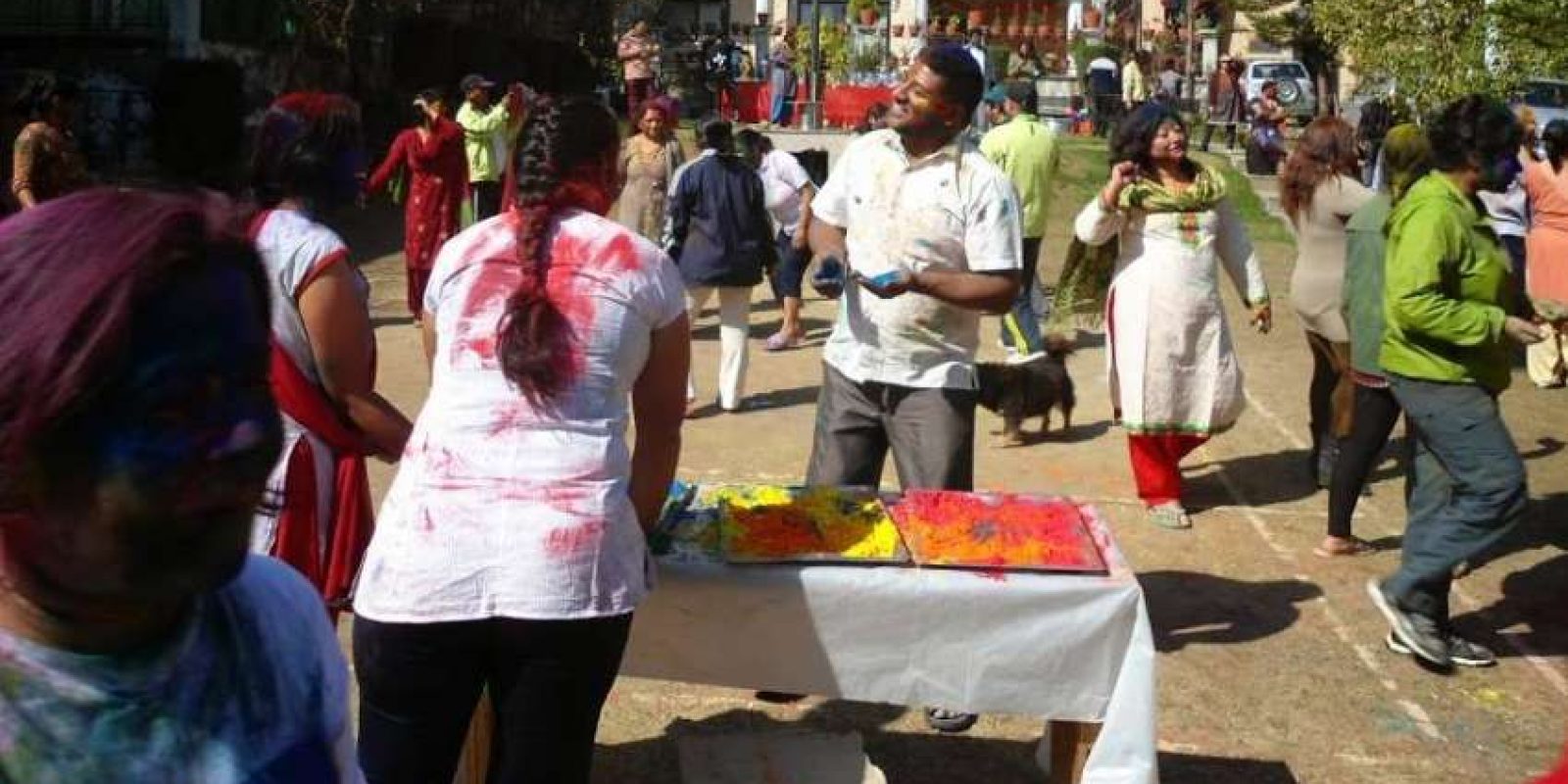Holi : festival of colours
Holi (होली ) is a spring festival, also known as the festival of colours or the festival of sharing love. It is an ancient Hindu religious festival which has become popular with non-Hindus in many parts of South Asia, as well as people of other communities outside Asia.
It is primarily observed in India, Nepal, and other regions of the world with significant populations of Hindus or people of Indian origin.
In Nepal, Holi is as important as Dashain, Tihar (Dipawali). Since more than 80% of people in Nepal are Hindus, Holi, along with many other Hindu festivals, is celebrated in Nepal as a national festival.
People walk down their neighbourhoods to celebrate Holi by exchanging colours and spraying coloured water on one another. A popular activity is the throwing of water balloons at one another, sometimes called lola (meaning water balloon). Also a lot of people mix bhang in their drinks and food, as is also done during Shivaratri. It is believed that the combination of different colours at this festival take all the sorrow away and make life itself more colourful.
In Nepal, Holi celebrated in Hills is remarkably different from Madhesh, even the festival is celebrated on two different days. Holi is celebrated in the month of Falgun and is also called as the “Fagu/Phaguwa” and is celebrated on the full moon day (in hills) and the day after (in Madhesh) in the month of February. The word “Fagu/Phaguwa” represents the month of Falgun and the day is called the “Fagu Purnimaa” which means (full moon day in the Falgun).
Sccording to legend, King Hiranyakashipu was the King of Multan and had earned a boon that made him virtually indestructible. He grew arrogant, thought he was God, and demanded that everyone worship only him.
Hiranyakashipu’s own son, Prahlada, however, disagreed. He was and remained devoted to Lord Vishnu. This infuriated Hiranyakashipu. He subjected Prahlada to cruel punishments, none of which affected the boy or his resolve to do what he thought was right. Finally, Holika – Prahlada’s evil aunt – tricked him into sitting on a pyre with her. Holika was wearing a cloak that made her immune to injury from fire, while Prahlada was not. As the fire roared, the cloak flew from Holika and encased Prahlada. Holika burned, Prahlada survived. Seeing this, Hiranyakashipu, unable to control his anger, smashed a pillar with his mace. There was a tumultuous sound, and Lord Vishnu appeared as Lord Narasimha and killed Hiranyakashipu. The bonfire is a reminder of the symbolic victory of good over evil, of Prahlada over Hiranyakashipu, and of the fire that burned Holika. The next day when the fire cooled down, people applied ash to their foreheads, a practice still observed by some people. Eventually, coloured powder came to be used to celebrate Holi.
Source: https://en.wikipedia.org/wiki/Holi
You make also like
Play safe and healthy holi
Skin care during holi



